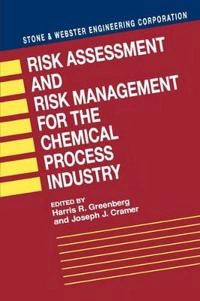The tragic incident at Bhopal, India made it clear that safetyreviews for identification and control of accidents involving toxicchemicals must be more systematic. This guide shows how tointegrate hazard identification, risk assessment, consequenceanalysis, and risk mitigation into a formalized program forhandling hazardous chemicals. Most of the 21 contributors aresenior staff members at Stone & Webster EngineeringCorporation. They discuss how to perform and supervise safetystudies for chemical, petrochemical, petroleum refining, and otherfacilities. They discuss all aspects of detection, prevention, andmitigation of risks associated with processing, handling, andproduction of hazardous chemicals. Special attention is given tohazard identification and hazard assessment techniques ranging fromsimple screening checklists to highly structured Hazard andOperability (HAZOP) analysis. You're shown how to calculatepotential consequences of identified hazards, quantify thelikelihood of these events, and combine equipment failure rate dataand human reliability analysis with hazard assessment. You'll alsobenefit from the book's rundowns of how to
* apply expert systems and artificial intelligence in riskmanagement
* instill safety-oriented operating and maintenanceprocedures
* train operators and emergency response personnel
* conduct internal and external safety audits
* perform chemical dispersion, explosion, and fire analyses
* assess health effects from chemical releases
* use insurance vehicles to deal with residual risk.
Risk Assessment and Risk Management for the Chemical ProcessIndustry is an essential source on minimizing the dangers of toxicincidents and accidents. It is essential reading for safetyengineers, regulatory managers, environmental engineers, and otherprofessionals responsible for safety in chemical plants.
Åtkomstkoder och digitalt tilläggsmaterial garanteras inte med begagnade böcker





















